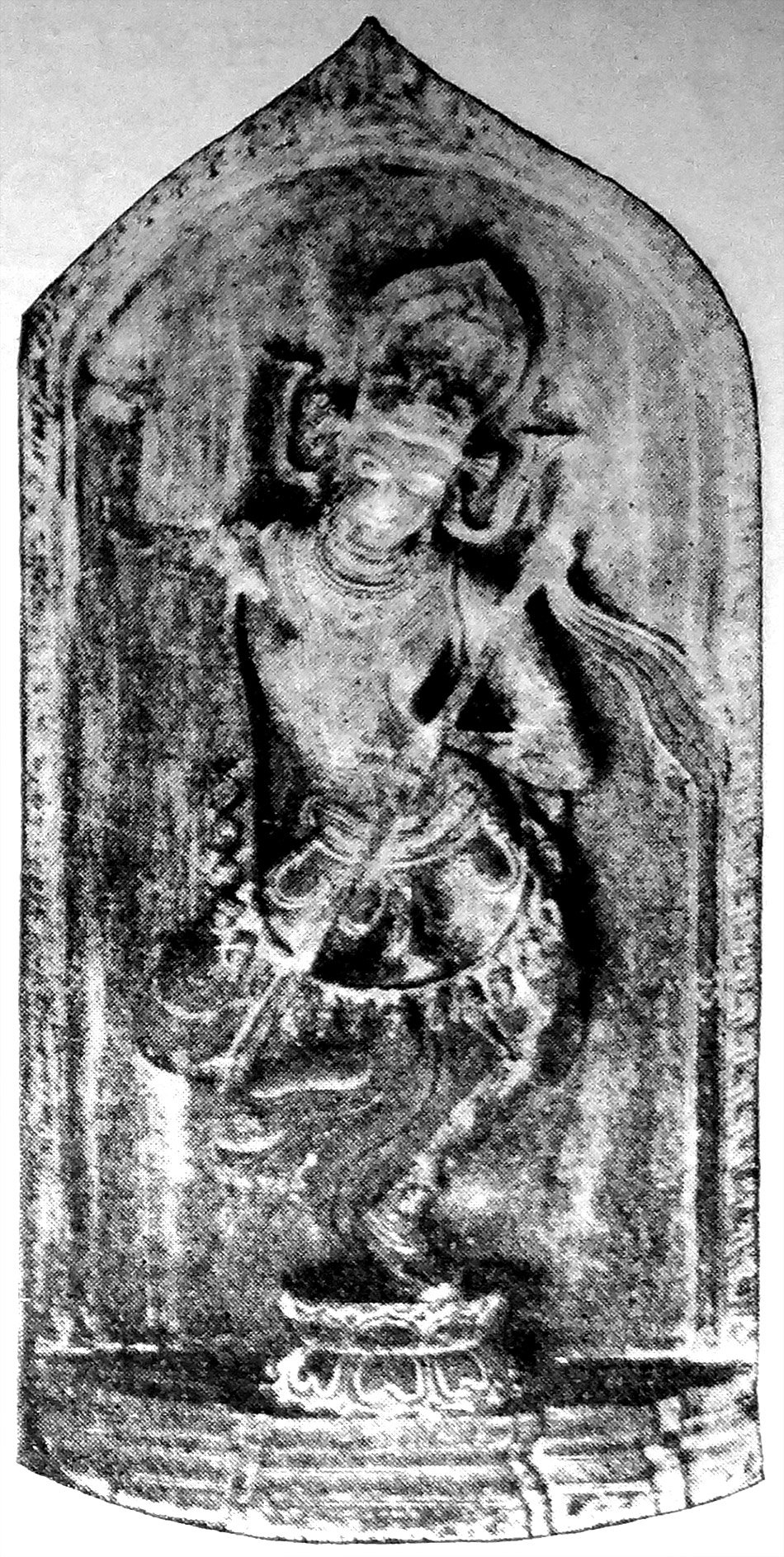The Indian Buddhist Iconography
by Benoytosh Bhattachacharyya | 1958 | 51,392 words | ISBN-10: 8173053138 | ISBN-13: 9788173053139
This page contains an iconography image of Emanations of Akshobhya: Heruka and represents figure 125 of the book Indian Buddhist Iconography, based on extracts of the Sadhanamala English translation. These plates and illustrations represent either photographs of sculptures or line-drawing reproductions of paintings or other representations of Buddhist artwork.
Figure 125 - Emanations of Akṣobhya: Heruka

Figure 125: Heruka
(Dacca Museum)
Heruka is one of the most popular deities of the Buddhist pantheon and a regular Tantra, the Heruka Tantra, is devoted to his worship. Heruka is worshipped singly as well as in yab-yum. When he is in yab-yum he is generally known as Hevajra and in this form he is popular in Tibet, Many of his forms are described in the Sādhanamālā in its numerous Sādhanas, and the additional ones are derived from the Niṣpannayogāvalī of Abhayākara Gupta.
In the Sādhanamālā the worship of Heruka is said to confer Buddhahood on his worshippers, and he is said to destroy all the Māras (mischievous beings) of the world. In another Sādhana for the worship of this particular kind of Heruka the Khaṭvaṅga is described as being marked with a Vajra of five thongs and decorated with a banner with jingling bells, human heads and double lotus, the lower part of the Khaṭvaṅga resembling the Vajra with one thong. The Sādhana does not mention the number of heads in the necklace, but says simply that they are strung with guts. His left leg rests on the double lotus (and not on the corpse) while the right is placed on the left thigh in a dancing attitude.
The image (Fig. 125) discovered by Mr. N. K. Bhattasali and deposited in the Dacca Museum, agrees in all details with the description given above. Though the hands are broken it can yet be discerned that the right wielded the Vajra and the left carried the Kapāla against the chest. The attitude in which he stands is called the dancing attitude in Ardhaparyaṅka. His head-dress in decorated with five skulls and the effigy of Akṣobhya. The Khaṭvaṅga has an overflowing banner attached to it, and at the end of the banner small bells can be seen.
Colour: blue;
Arms: two;
Symbols: vajra and kapāla;
variety: single;
